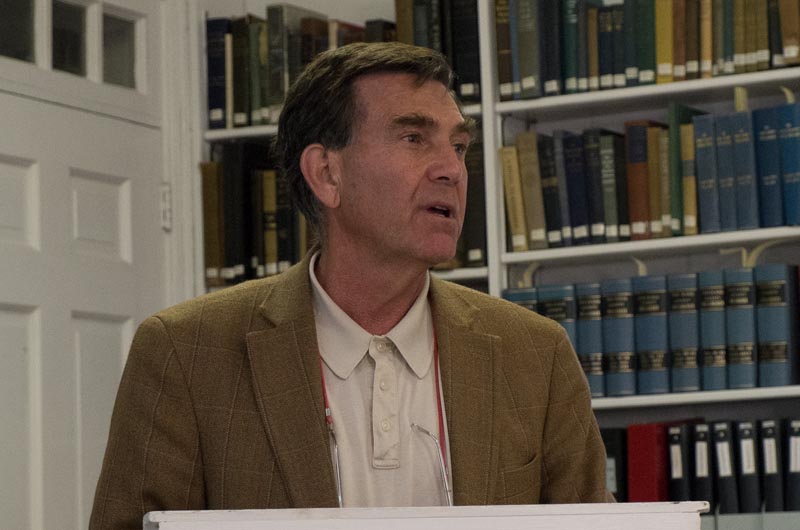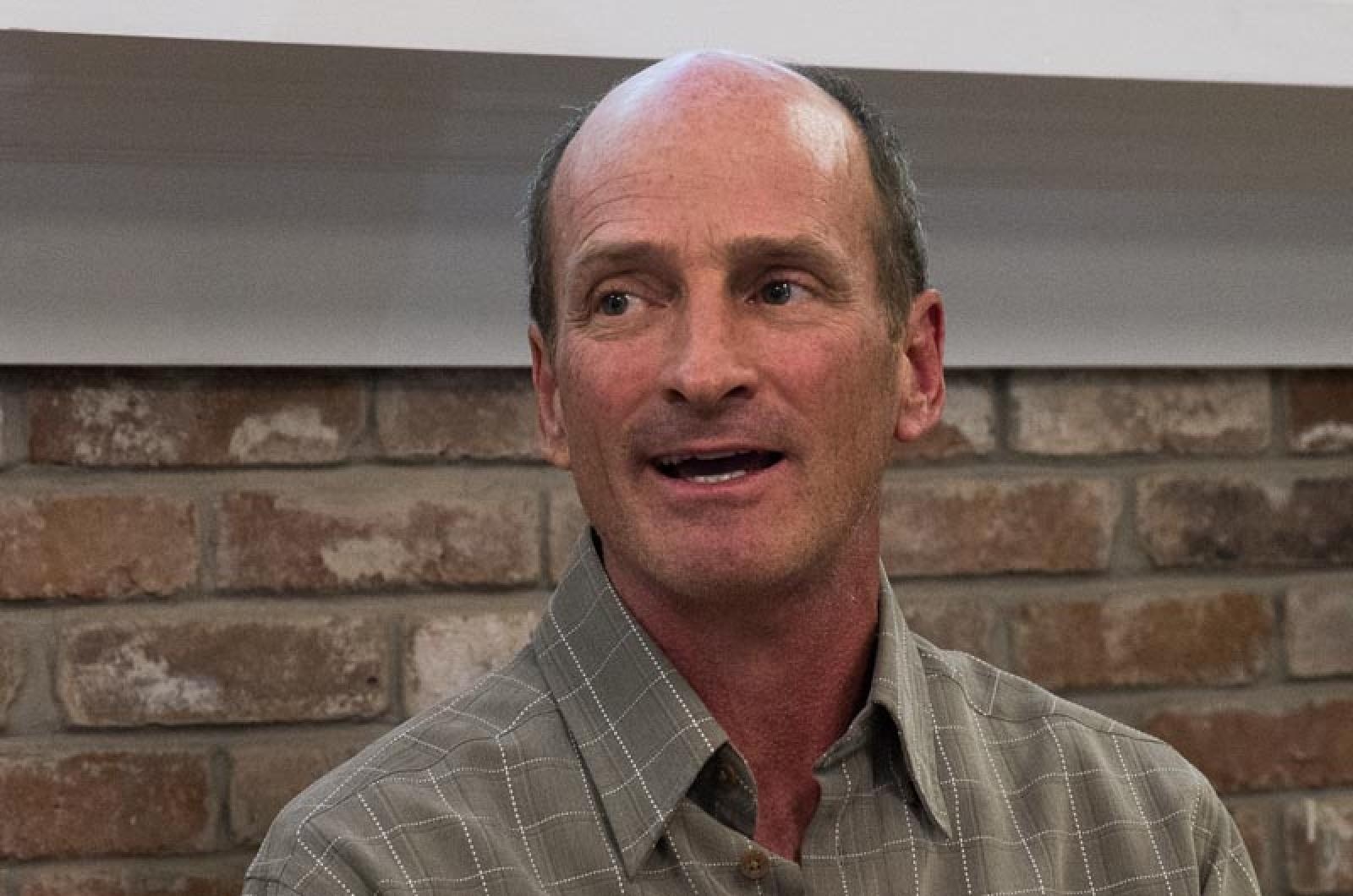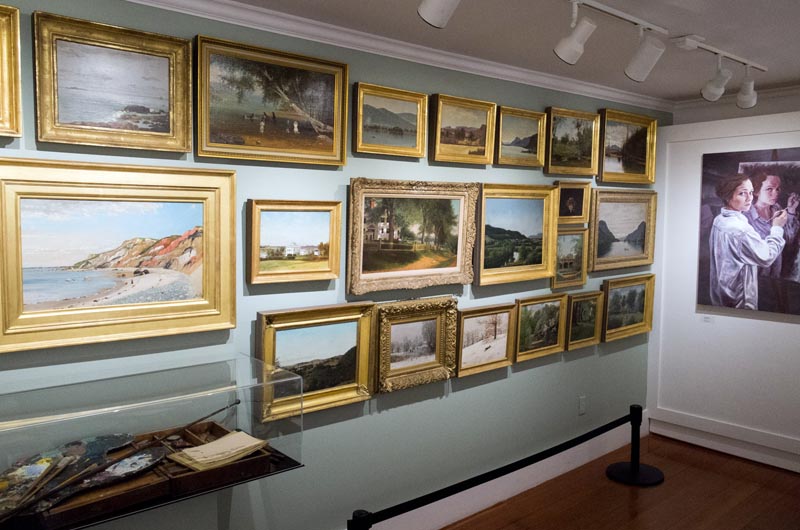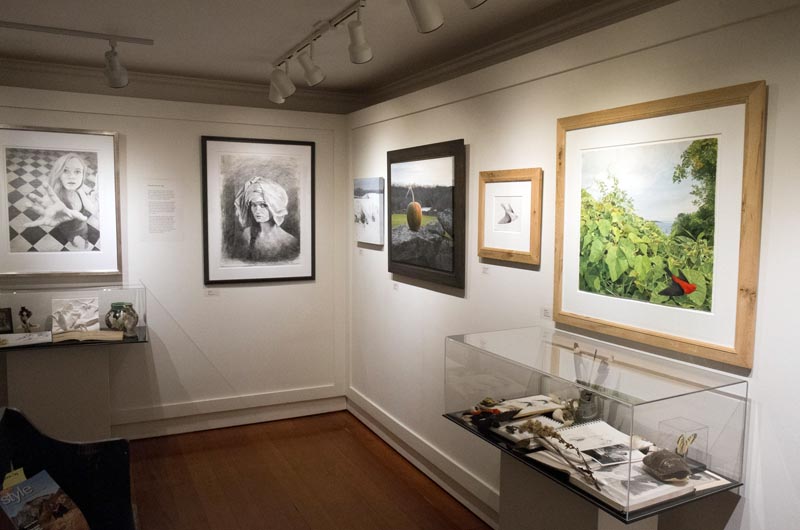Andrew Gordon Moore spends a good deal of time in his Oak Bluffs studio. Even when he’s not feeling inspired, he said, he’s still working. That’s part of the discipline required to survive as an artist.
His landscapes, portraits and scenes of life on the Vineyard often take months to complete. “I kind of think of a painting as like the real world,” he said. “It works at a distance, and as you move closer all the different elements that make up that view then become their own thing. The patterns within patterns and color within color just builds and builds.”
During a public conversation Thursday at the Martha’s Vineyard Museum, Andrew reflected on his career as part of a legacy that spans at least four generations. The museum is featuring his work along with drawings and paintings by his daughter, Hannah, and his great-great-grandfather N.A. Moore, a painter of the Hudson River School.
“Moore, Moore and Moore” runs at the museum through Oct. 25.
While N.A. did much of his painting at Lake George and in the Connecticut River Valley, Andrew’s work focuses on scenes of the Vineyard, where he has lived since 1983. His meticulous, realer-than-life style has emerged from a lifetime of looking carefully at things and from absorbing the shifting light and scenery of the seasons on the Vineyard.
N.A. Moore’s fourth child, Ethelbert, married into the Hart family of Connecticut, which ran Stanley Works and developed Harthaven, a community in Oak Bluffs. N.A. lived in Connecticut, but visited the Vineyard at least once, in 1894. His paintings of the Gay Head Cliffs and Ocean Park are included in the show.
As with his great-great-grandfather, Andrew’s work is deeply rooted in a sense of place. “I think knowing well what you’re painting, that’s where the soul comes from,” he said during the conversation with museum director David Nathans and curator Bonnie Stacy. “You are painting something, but you are also studying what underlies that thing.”
Each season on the Vineyard provides a new perspective, he said.

A slide show he presented Thursday highlighted some of his work, including landscapes, seascapes and other scenes of life on the Vineyard. “This Island is just never-ending in its interest,” he said. “As soon as you think you’ve seen everything onshore, you just need to hop in a boat.”
N.A.’s larger brush strokes and looser precision stand somewhat in contrast to Andrew’s layered, microscopic accuracy. But both artists invite fresh, intimate perspectives on places we may only think we know well. “We both have spent most of our lives looking at things, understanding weather and light and nature,” he said. “So that’s our connection.”
Hannah Moore has been painting and drawing for most of her life, but as an art student at Syracuse University she is beginning to find her voice as an artist, Andrew said. “She’s working through a very traditional education, drawing from life, and she’ll gradually do more and more painting. But this is really kind of the beginning of it all.”
All three artists studied portraiture as part of their formal educations, and at least one portrait by each is included in the exhibit. Hannah’s work, like her father’s, is based in observation and shares its accuracy and detail. Four of her self portraits are included in the show.
When he was younger, perhaps the biggest inspiration Andrew took from his great-great-grandfather was a sense of legitimacy in pursuing an artistic career. “Having someone who worked professionally as a painter, it brings it into the realm of a serious thing,” he said. His mother was also a painter, and his wife, Heather Goff, is a painter, ceramicist and website designer. Their son Gordon, a senior at Martha’s Vineyard Regional High School, is a painter and ceramicist.
“Heather and I kind of let our kids make their own decisions and there is no pressure to go into a family trade,” Andrew said. He said Hannah’s focus until about 10th grade was on math and science, “and then, all of a sudden her eyes opened up, and she was like, I know what I want to do.”
It’s easy to imagine that N.A. benefited from an open-minded family as well. His father, Deacon, in addition to running a mill, was an engraver, furniture builder and miniaturist. N.A.’s oldest son, Edwin, became a successful painter.
While many landscape painters at the time lived in New York, N.A. chose a different path, Mr. Nathans, the museum director, said. “He made a conscious choice not to necessarily live where artists worked, because for him, I think, family and the education of his kids was very important . . . as important as his art was.”
He worked mostly on commission, benefiting from chance encounters. “He never became a member of the national academy, but could have easily,” Mr. Nathans said.
The Vineyard was itself a nurturing environment, said Andrew, and Hannah’s teachers at the high school helped her develop her talent. On occasion, Andrew has provided technical and practical guidance of his own. “I say it’s a hard road,” he said. “While there are moments where you are celebrated, most of the time you are working in isolation in a room, generating your own motivation. Financially, it can be wonderful and it can be terrifying.”
As a student, Hannah now has the opportunity to push her boundaries, he said. “She knows that, and she knows the discipline it requires. And she can look at me and then back at N.A. Moore, who worked out a life in a different way, but managed to have a family and a really interesting life as a painter.”









Comments (2)
Comments
Comment policy »